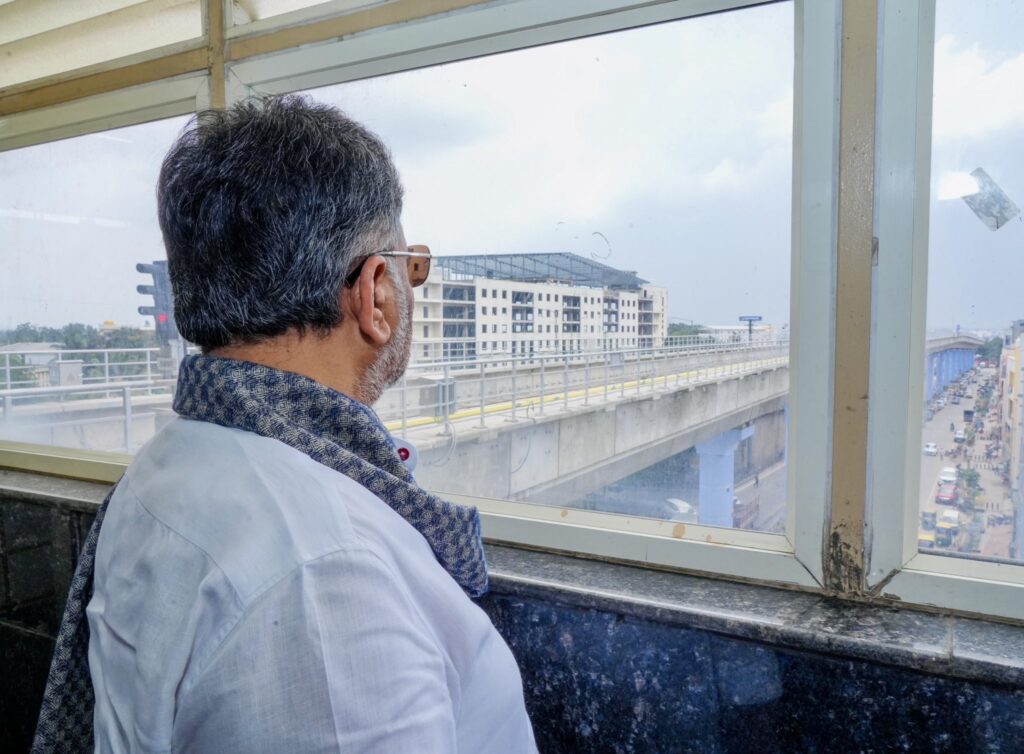
Dy CM DK Shivakumar inspects the Yellow line ahead of its opening
Bangalore Metro’s Yellow Line: CMRS Restricts Train Speed at 60 km per hour
The long-anticipated Yellow Line of the Bangalore Metro Rail Project has received the green light for public operations following a comprehensive inspection and safety clearance by the Commissioner of Metro Rail Safety (CMRS).
This 19.1-kilometre elevated stretch, part of Reach 5, Phase 2, connects R.V. Road to Bommasandra via standard gauge double lines powered by a 750V DC third rail system.
The CMRS inspection report for Bangalore Metro’s Yellow Line has not only granted approval for public operations but also laid out strict pre-launch directives to ensure passenger safety, operational efficiency, and communication clarity.
Prime Minister Narendra Modi is scheduled to flag off the first train at Ragigudda Metro station. Chief Minister Siddaramaiah, Dy CM DK Shivakumar will be part of the inaugural ceremony.
The corridor is expected to improve connectivity across southern Bengaluru and ease congestion along one of the city’s busiest industrial corridors. The project took about eight years to complete, during this period a large number of companies have moved out of Electronic City area.
Key Highlights
- Route & Gauge: The newly approved corridor spans from R.V. Road station (Ch: YN 0.588) to Bommasandra station (Ch: YS 18.524) using standard gauge tracks (1435mm).
- Inspection & Clearance: The inspection was conducted by CMRS on July 22–23, 2025, covering all key installations including tracks, power supply, and signalling systems. A speed trial was carried out on July 24, achieving up to 63 kmph with safe acceleration and braking patterns.
- Operations Approval: The CMRS has now sanctioned the public opening of the Yellow Line, permitting operations up to 80 kmph or as regulated by the Automatic Train Protection (ATP) system. Speed will be restricted to 60 kmph at platforms.
- Safety Conditions: The approval is conditional, requiring BMRCL to comply with the technical clearances already issued by the Railway Board regarding traction, signalling, telecommunications, train operations, and the six-car train configuration.
During the inspection, CMRS found signage errors—like the interchanged Emergency Trip Switch (ETS) and Emergency Stop Plunger (ESP) at Electronic City station and Automatic Train Supervision (ATS) system with Passenger Information Display Systems (PIDS) were still pending.
Observations also included oil leakage in the DG enclosure, unsatisfactory operation of D2 and D3. Issues with failure of the ATP system at two interlocked stations (Hongasandra and Bommasandra), with recommendations for re-designed boundary conditions and mode (RM or Cut-out) usage.
The team also directed the BMRCL to train all operating and maintenance staff especially because the Namma Metro is introducing CBTC with digital axle counters for fallback detection.
